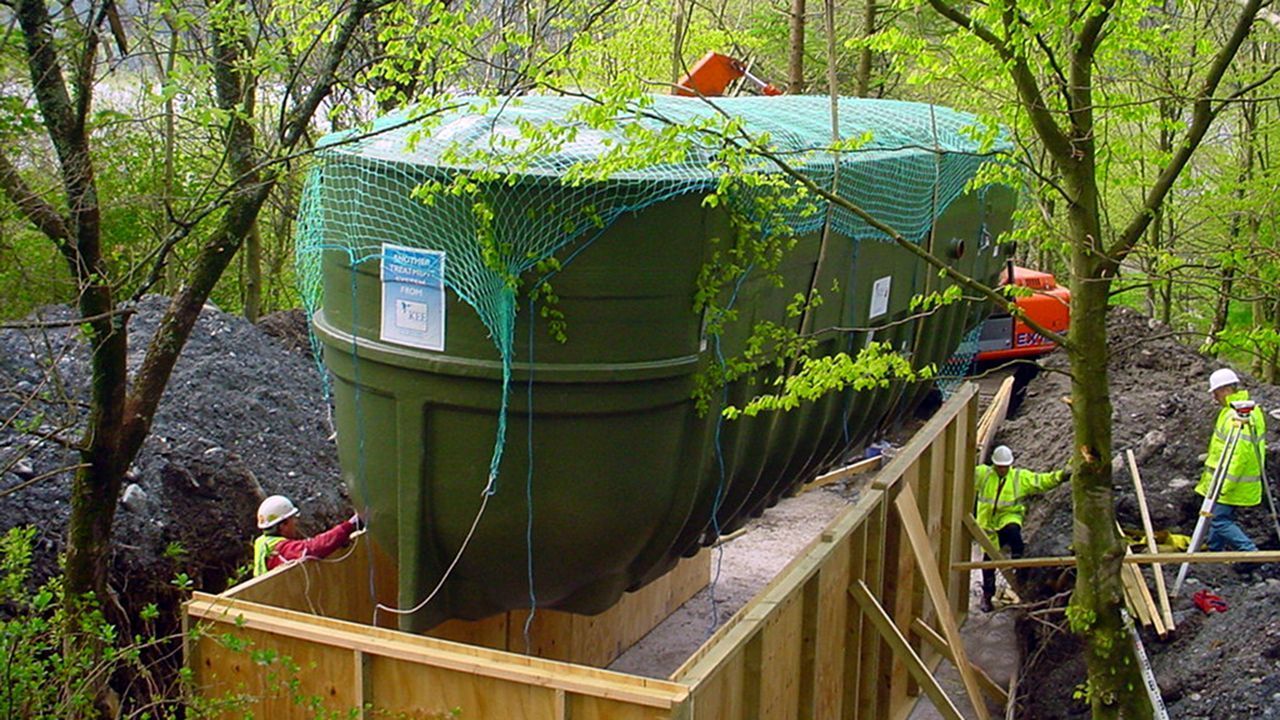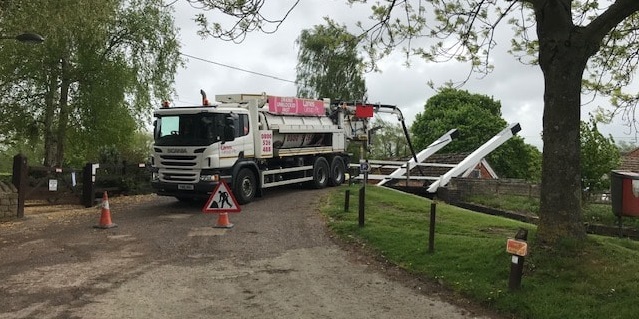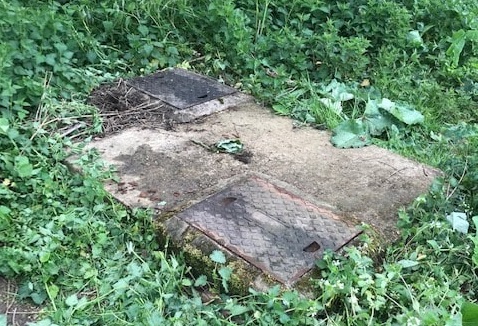Homeowners Guide to Cesspits and Septic Tanks
 When a household cannot connect to the mains sewerage system, wastewater can be disposed of via a septic tank or cesspit. Find out more about how they work and what using one means for your water usage, along with some tips on using and maintaining your septic tank or cesspit with as little fuss as possible.
When a household cannot connect to the mains sewerage system, wastewater can be disposed of via a septic tank or cesspit. Find out more about how they work and what using one means for your water usage, along with some tips on using and maintaining your septic tank or cesspit with as little fuss as possible.
If you have a septic tank or cesspit, you don’t need to pay sewerage charges to a water company or sewerage company, but a permit fee applies. It is also your responsibility to make sure your septic tank or cesspit is properly maintained.
How they work
Septic Tanks
Septic tanks collect sewage and wastewater, separating it into different chambers within the tank. Solids settle and decompose, while liquids exit into the environment.
You need to make sure you meet the ‘general binding rules’ of owning a septic tank, or that you apply for a permit from the Environment Agency if you don’t meet these rules.
These rules state that the sewage must be domestic in nature, and must not cause pollution. There are also rules you’ll need to follow depending on whether you release the sewage to the ground or to a surface water, which can be found in the official GOV.UK guidance on the general binding rules, along with clarification of what constitutes domestic sewage, and details on how to check for pollution.
If your septic tank releases into a groundwater source protection zone (SPZ1), you will need a permit. Once again, consulting the official GOV.UK guidance can help you work out if this applies to you.
Additionally, septic tank owners should pay close attention to a recent change to the rules, which came into effect on January 1st 2020, meaning that septic tanks are no longer permitted to discharge directly into a watercourse – instead, you will need to connect to the main sewer network, establish a drainage field, or convert your system into a full sewage treatment plant.
This rule has applied to newly created properties for a number of years, but as of January 1st 2020 now also applies to owners of existing septic tanks, with potential fines of up to £100,000 for getting this wrong.
England, Scotland, Wales and Northern Ireland have differing rules as to how your tank should be registered in accordance with these updated regulations – to find out more about how this works, check out our septic tank best practice guide.
You should have your septic tank emptied and checked at least annually, by a qualified company that will ensure the waste goes to a registered disposal site. Be sure to keep an auditable paper trail for your records.
Cesspits
A cesspit is a sealed, fully-enclosed tank that collects and stores sewerage – it doesn’t treat it in any way.
If you have a cesspit on your property, you don’t need to register it. However if you plan to install a new one you will need planning permission and building regulations approval to do so.
When you have a cesspit, you must have it emptied regularly by a registered waste handler, who will dispose of the contents in a specialised waste disposal site. This could mean monthly, quarterly or yearly emptying, depending on the size of your household and your water usage. It is your responsibility to ensure you employ a registered waste handler to do this, ensuring you receive bona fide paperwork noting the disposal site.
Cesspits are usually buried underground, so won’t take up room on your property – apart from one manhole which is needed for access.

Will you need to modify your water usage habits?
Septic tanks
How much water you use will determine whether you need a permit for your septic tank:
If your septic tank discharges more than two cubic metres (2,000 litres) per day to the ground, or more than five cubic metres (5,000 litres) per day to a surface water, you’ll need a permit.
There are two different permit prices, one for people who use five cubic metres (5,000 litres) or less per day, and one for those who use over 5,000 cubic metres per day.
Use the government calculator here to determine whether your tank discharges this amount per day or, for commercial properties, use British Water’s ‘Flows and Loads’ guidance.
Cesspits
You don’t need a permit for a cesspit, and you don’t have to comply with the general binding rules. However, you do need to make sure it doesn’t leak or overflow – so the amount that goes into it is important.
Tips: how to save water
•Consider fitting water-saving devises such as dual flush toilets, water butts, tap flow regulators, and economical shower heads.
•If you notice a leak or drip, get it fixed as soon as possible to avoid wasting water.
•When it’s time to replace your washing machine or dishwasher, the Energy Saving Trust recommends you do so with products baring the new ‘Water Efficient Product’ label and/or the ‘Waterwise Recommended Checkmark’. These products have been designed to help you to save money and energy, as well as water.
•Choose a shower over a bath; as long as you keep it to around five minutes, showering could save you water and money. Alternatively, invest in a reduced-capacity bath.

Care and maintenance for your septic tank or cesspit
Septic tanks
•At least once a month, check the area you are releasing water to for signs of pollution, and contact the Environment Agency if you spot any. The EA can and will prosecute when pollution incidents occur
•Use biologically-friendly household cleaning products – don’t let commercial chemicals or bleach get into the tank.
•Don’t let medicines get into the tank.
•Have the septic tank emptied and cleaned regularly by a licensed company.
Cesspits
•Check the level in the tank regularly – it is an offence under the 1936 Public Health Act to let it overfill.
•Have the cesspit emptied regularly by a registered waste handler. Use biologically-friendly household cleaning products – don’t let hazardous or flammable liquids get into the tank.
•Don’t let medicines get into the tank.
•Keep the area surrounding the manhole clear for easy access.








